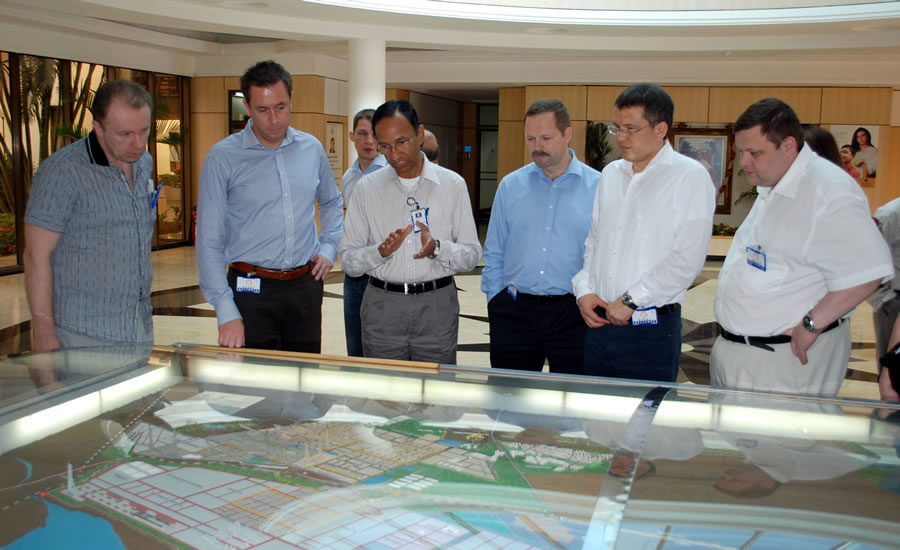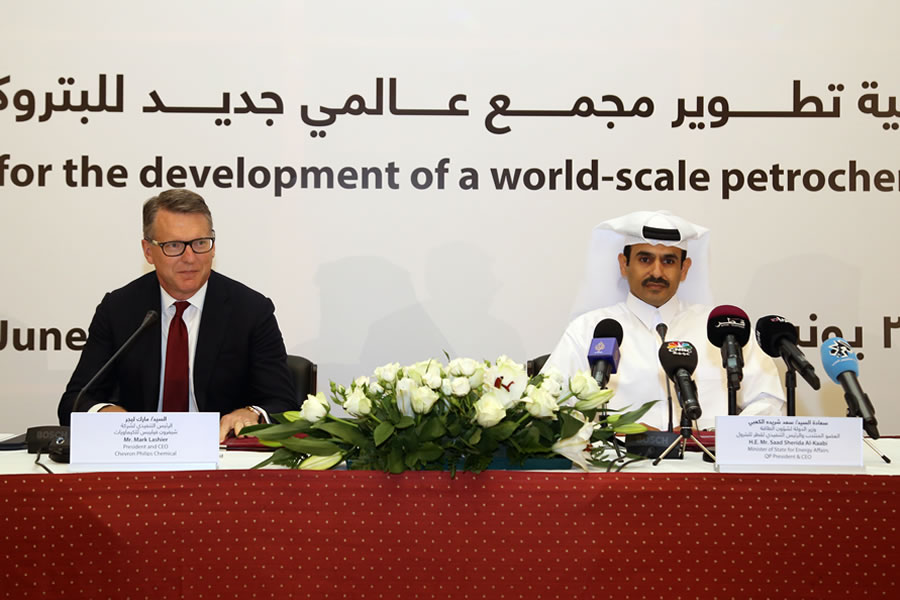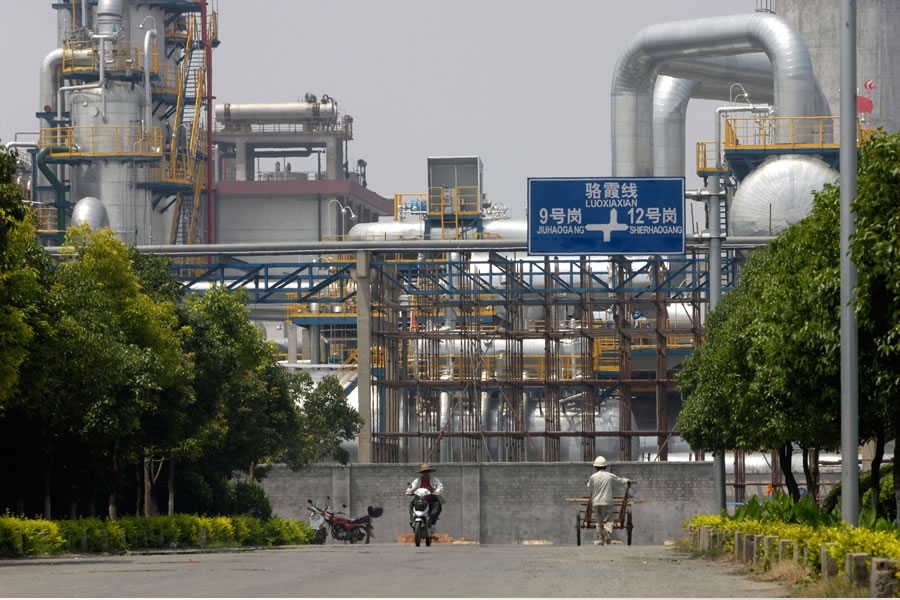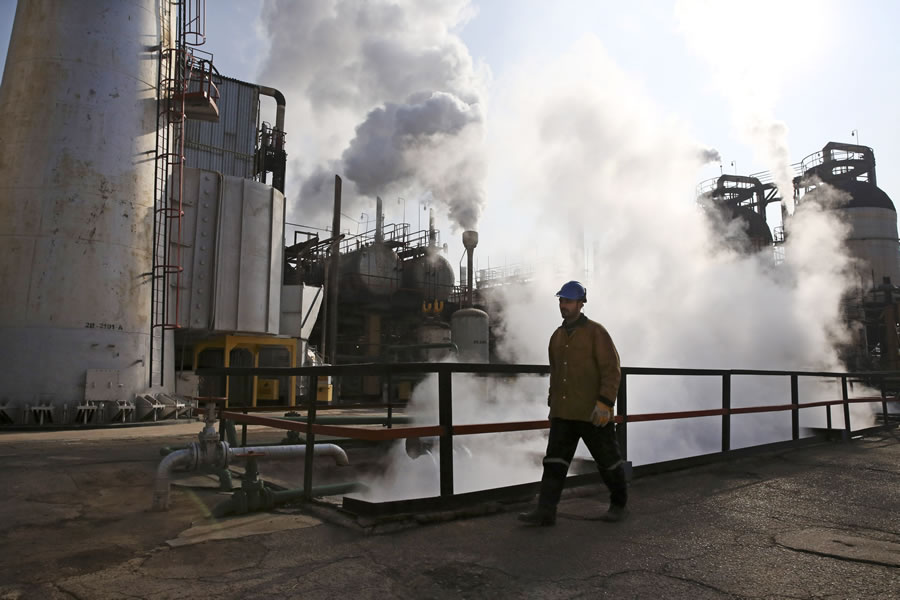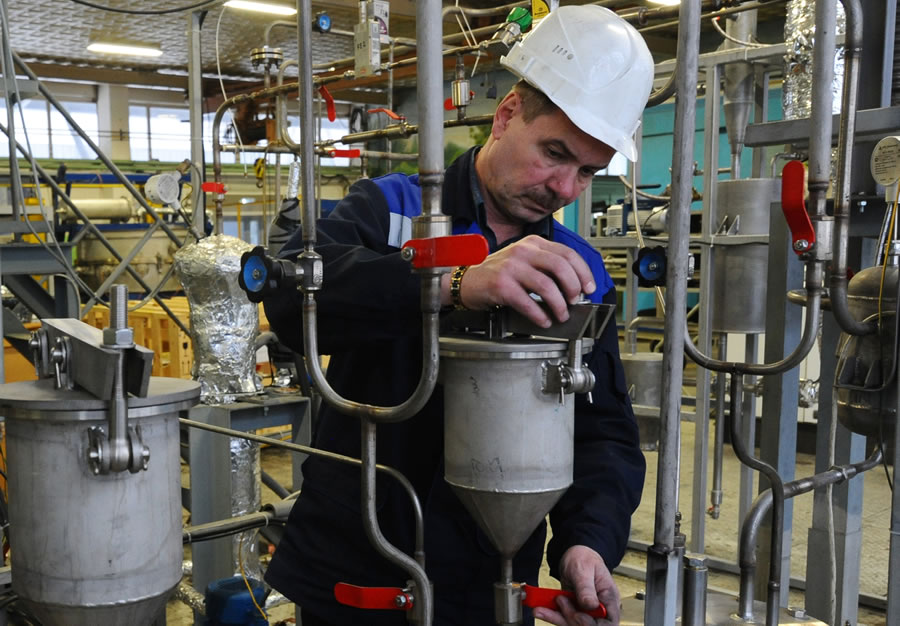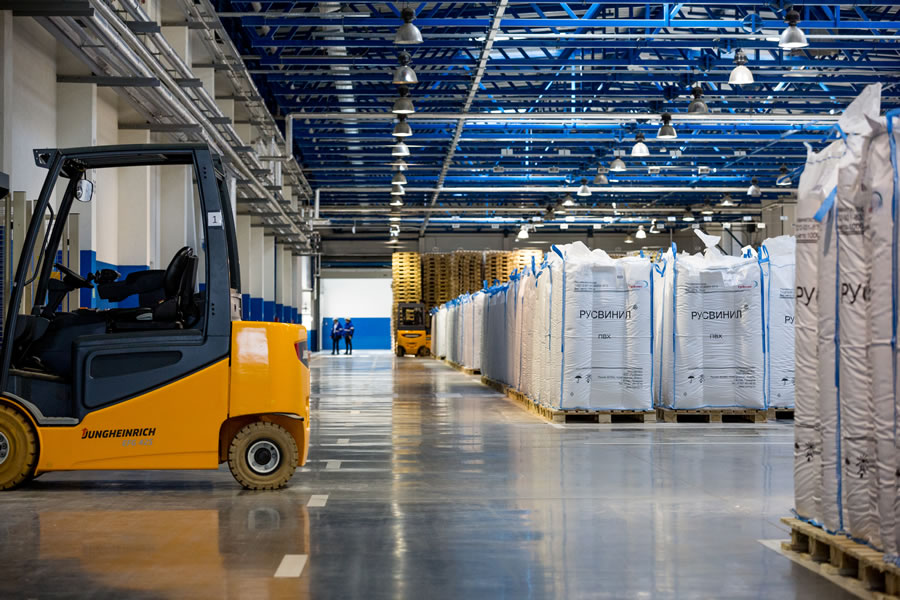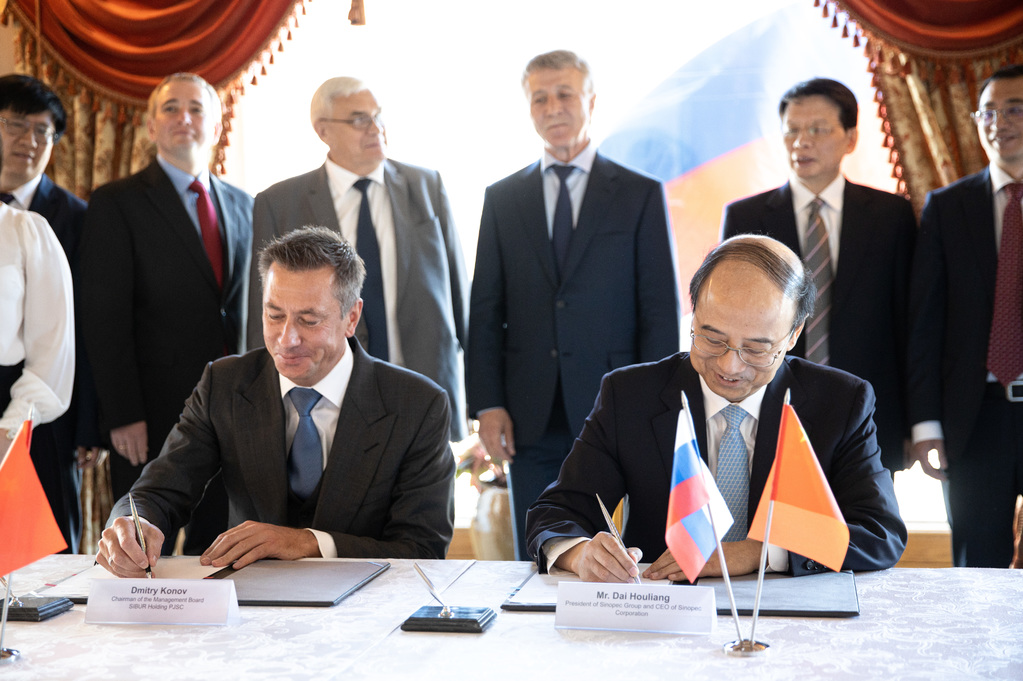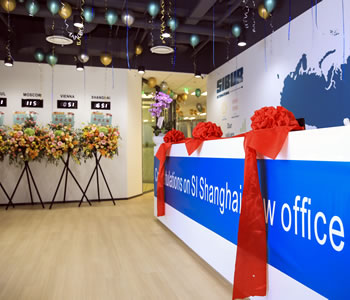Joint ventures are among the most promising ways to build up business, including in petrochemical industry. This form of cooperation offers cost sharing between participants and higher competitiveness achieved by bringing together innovations, technologies, and market knowledge. China, India, and the Middle East are becoming the most attractive markets for forming joint ventures due to affordable feedstock, convenient logistics, and rapidly growing demand. Following global trends, SIBUR develops successful joint ventures in these regions.
Earlier this autumn, Reliance Sibur Elastomers Private Limited, a joint venture (JV) between SIBUR and India-based Reliance Industries located in Jamnagar, released its first product batch. This was SIBUR’s first JV in India, and the company plans to explore the region's potential further.
Joint ventures give access to freely available technologies and represent an effective tool to quickly market competitive products.
Risk sharing
Joint ventures are a very forward-looking way of developing production. JVs give access to freely available technologies and represent an effective tool to quickly market competitive products. These ventures play an important role in breaking down all sorts of barriers holding back the development of international economic relations.
Unlike other forms of incorporation, e.g. mergers or acquisitions, joint ventures are associated with joint ownership of material and financial assets. It also means co-investment between two or more entities, one of them often (but not necessarily) being a foreign one. These strategic alliances are formed to exchange markets, intellectual property, assets, knowledge, and revenues.
Joint ventures boast a number of advantages over other types of entities.
SIBUR and Reliancе Industries sign an agreement to create a joint venture in 2012.
First, the partners can reduce expenses by splitting product development or marketing costs. Such ventures tend to have better access to quality loans and large borrowings or grants. By merging their client bases, the parties can develop a joint product to enter new markets. It also brings down the overall production costs making the new product cheaper for consumers.
According to analysts, the global petrochemical industry has radically changed its facility placing preferences over the last few years – large-scale plants are being relocated closer to cheap feedstock, convenient logistics, and rapidly growing demand.
Second, JV partners can exchange ideas on strengthening the new product's competitive edge, while joint access to finance and technologies makes the launch faster and more efficient. Sharing markets, technologies, and innovations puts JVs in a much stronger position compared to other market leaders. Then there is synergy that should not be undervalued.
“The idea behind any joint venture is to share risks,” says Andrey Kostin, Head of RUPEC think tank and analytical agency. “When risks are shared between partners, the investment decisions are taken much faster.”
Past and present
JVs appeared at the early stages of industrial development. In the US, they were used in the mining industry, construction, shipping, oil and gold exploration. Europe’s best known JVs produced cars, electronics, and household appliances.
Petrochemical joint ventures date back over 50 years. One of the largest associations established back in 1943 was a joint venture between Dow Chemical, the world's largest chemical producer, and Corning, Inc., a well-known US glass manufacturer, aimed to solve the problem of humidity and corona discharge at high altitudes, which then interfered with aircraft flights. This resulted in the incorporation of Dow Corning, which currently offers sealants, glues, rubbers, lubricants, release agents, and liquid silicone. The company employs ca. 10,000 people.
Dow Corning, Michigan, USA.
The decline in oil prices spurred M&A activity, with the total value of such deals growing steadily in the last couple of years.
The petrochemical industry sees new petrochemical joint ventures established each year. In June, the US oil and gas company ExxonMobile and petrochemical Saudi Basic Industries Corporation (SABIC) announced their intentions to build a petrochemical plant and the world's largest 1.8 mtpa ethane steam cracker. The US-based facility slated for launch in 2022 will produce feedstock for automotive coolants, packaging and building materials, and clothing.
Another joint venture was announced in June by Qatar and US-based Chevron Phillips Chemical. The companies intend to create new facilities at a petrochemical complex in northern Qatar.
“The complex will be able to produce as much as 1.9 mtpa of ethylene at the largest ethylene unit globally,” said Saad Sherida Al-Kaabi, President of Qatar Petroleum, at a media briefing. “It will also include two polyethylene units, raising Qatar's polyethylene production by 82% by 2025.”
In September, Michelin, Continental, and Smag, a French software developer for agriculture, announced a planned joint venture to promote sustainable and environmentally friendly sourcing of natural rubber. The new Singapore-based entity will develop Michelin’s mobile application for rubber industry to assess rubber suppliers’ compliance with regulations covering social and environmental responsibility. The project received support from the World Wildlife Fund.
Chevron Phillips Chemical and Qatar Petroleum have signed an agreement to develop a petrochemical complex in Qatar. Photo: cpchem.com.
Asia Pacific leads the way in terms of joint ventures established (accounting for a third of all planned projects).
Geography of new JVs
“The growing construction of new facilities gives impetus to joint venture projects,” says Andrey Kostin. “Naturally, these regions are currently the Middle East, China and the United States.”
His opinion is confirmed by the study conducted by VYGON Consulting, an independent consultant on the development of the Russian fuel and energy complex. According to analysts, the global petrochemical industry has radically changed its facility placing preferences over the last few years – large-scale plants are being relocated closer to cheap feedstock, convenient logistics, and rapidly growing demand. India and China are the regions with the fastest growing consumption unable to satisfy the domestic demand internally and increasingly interested in importing both petrochemical products and technologies. In Europe, the focus has shifted to fine and highly innovative products, largely due to advanced technological development and low competitiveness in petrochemical feedstock, especially compared with the Middle East.
Researchers conclude that the need to improve production efficiency drives industry consolidation. The decline in oil prices spurred M&A activity, with the total value of such deals growing steadily in the last couple of years. A good example of pooling resources is the largest deal in the history of the petrochemical industry – the merger of Dow Chemical and DuPont into Dow DuPont in September 2017. The deal amounted to ca. USD 130 bn.
Sinopec Zhenhai Refining & Chemical Company factory in Zhenhai, China.
Companies from other regions are increasingly collaborating with Middle Eastern counterparts to gain cost-saving benefits.
The general trend towards industry consolidation can also be seen in the institutionalisation of joint ventures. This idea was proven by yet another study – Joint Ventures in the Petrochemical Industry – Key Strategy to Manage Globalization, published by the UK analytical agency GlobalData. According to the agency, following the hardships of recession in the late 2000s, petrochemical companies are now focused on production ramp-up and geographical expansion. As European and, to some extent, North American manufacturers struggle with declining demand, they are forming JVs with Middle Eastern and Asian companies.
The most attractive market for joint ventures, according to British researchers, is China, which has established itself as the largest petrochemical market due to the significant demand from its large population. Demand for petrochemicals has tripled in recent decades, with the average growth rate of 11.5%, which prompted the construction of new petrochemical complexes amid China's favourable investment climate created by government policies. The analysts believe the Asia Pacific to lead the way in terms of joint ventures established (now accounting for a third of all planned projects).
The second most important region with a remarkable number of joint ventures is the Middle East. Many local governments subsidise petrochemical feedstock, making it very affordable. Companies from other regions are increasingly collaborating with Middle Eastern counterparts to gain cost-saving benefits. With the bulk of the world's gas reserves located in the Middle East, it has firmly established itself as a global petrochemical centre. Production has doubled over the past decade, and joint ventures are thriving. Moreover, researchers are positive that the industry continues to grow due to joint investments in the new production facilities. The number of joint ventures in these two regions is expected to remain on the rise in the upcoming years.
Oil refinery, Tehran, Iran.
India is the second largest consumer of natural rubber in the world and the third largest consumer of synthetic rubber in Asia.
Butyl rubber for India
SIBUR’s decision to create a joint venture in India is in line with the current industry trends.
“India is the second largest consumer of natural rubber in the world and the third largest consumer of synthetic rubber in Asia,” said Dmitry Khrichenko, Director at Reliance Sibur Elastomers Private Limited. “At the same time, the product that we bring to the market – butyl rubber – has not been produced in India before.”
Butyl rubber is mainly used in tyre production. Due to its strong gas permeability, the tyre tubes can hold air for a long time, reducing the vehicle’s fuel consumption and toxic emissions.
India is both the largest butyl rubber market and the fastest growing one, including the rapidly developing automotive industry, which drives the demand for this material. The project in Jamnagar will fully satisfy India's demand for rubbers, which currently have to be imported, and contribute to the implementation of the national Make in India programme.
Demand for butyl rubber is driven by the booming automotive industry. Photo: Daimler factory, Chennai.
Mobility is a megatrend gaining momentum around the world, but especially in emerging Asian markets such as India and China.
There are other manufacturers of this product in Asia. For instance, butyl rubber is produced in China, but its enterprises focus primarily on the domestic market. Singapore also has a few facilities but they lack proximity to the consumer. “We are located in India and are ready to bill in national currency and offer our customers more attractive delivery times than any of our Asian competitors,” said Dmitry Khrichenko.
SIBUR is the world’s only company to produce butyl rubber using a solution polymerisation method. With competitive operating costs, it is also environmentally safer than peer technologies relying on a toxic solvent.
In addition to the JV agreement, the parties signed a licence agreement for the joint venture to leverage SIBUR’s proprietary butyl rubber technology, which means that on top of participation in the JV capital, the Company will receive royalties from each tonne of the product manufactured. “It is the first time SIBUR implements its technology in another country; it is a unique project for the Russian petrochemical industry as regards technology export,” said Dmitry Khrichenko.
As the licensor, SIBUR engaged Russian machinery manufacturers. For example, the core process equipment – polymerisation reactors – were made at the Tambov-based Komsomolets plant in Russia, and are SIBUR’s know-how. A lot has been done in terms of training the JV staff – on top of theoretical courses, Indian operators completed hands-on training at the existing butyl rubber production site.
Polymerisation reactors for the JV were produced at the Tambov-based Komsomolets plant.
The joint venture between SIBUR and Reliance Industries was created in 2012 to build a 120 ktpa butyl rubber plant at the Reliance integrated petrochemical complex in Jamnagar, India.
The joint venture between SIBUR and Reliance Industries was created in 2012 to build a 120 ktpa butyl rubber plant at the Reliance integrated petrochemical complex in Jamnagar, India.
During the first year, SIBUR’s team was developing a front-end engineering design in Moscow together with a consortium of Italian Tecnimont and Russian GSE-Giprokauchuk. It was followed by the active project phase and formation of a joint project team of SIBUR and Reliance employees, which proceeded to develop detail engineering in India, purchase equipment, and manage construction. The production was launched earlier this year, and in September the first commercial butyl rubber was shipped to consumers. The project is now moving out of its investment phase into the operational phase.
For SIBUR, the project provides direct access to the Indian market, which has never been core for the Company. Reliance already produces 270 ktpa of rubber at their sites in Hazira and Vadodara, they are familiar with Indian customers and have an established logistic and sales network. All this reduces the risks for a new launch.
Another benefit of the JV is the integration with the world's largest refinery processing over 60 mt of oil annually, which guarantees a stable supply of feedstock and energy resources. On top of that, the project’s implementation within the third stage of Jamnagar refinery expansion allowed the JV to reduce costs by using Reliance construction infrastructure, sharing procurement of materials and equipment with other projects, and engaging contractors available at the site.
“The idea behind the partnership was to avoid having to secure our own land, building permits, access to energy and feedstock; all this is provided by our partner,” says Dmitry Khrichenko. “To invest in India, you need to be conversant with the regulatory framework and interact with government agencies at both the federal and state levels. The best way to do so is to partner with a strong local player.”
In 2017, the parties announced their plans to expand cooperation and set up a halogenated butyl rubber plant with the annual capacity of 60 kt at the same site. The construction in Jamnagar is nearing completion, and the halobutyl rubber production at the JV is expected to start in 2020. While butyl rubber is practically indispensable in tyre tubes manufacturing, the use of halobutyl rubber for the inner layer of the tyre enabled the creation and development of a market for modern tubeless tyres.
Construction of the first to South Asia halobutyl rubber complex in Jamnagar.
For SIBUR, the project provides direct access to the Indian market. Reliance already produces 270 ktpa of rubber, they are familiar with Indian customers and have an established logistic and sales network.
“The world is switching from tubed to tubeless tyres, and we believe that halobutyl rubber in India will also enjoy strong demand, despite currently having a smaller market than butyl rubber,” sums up the head of the Jamnagar project. “Mobility is a megatrend gaining momentum around the world, but especially in emerging Asian markets, such as India and China. The growth of population and its well-being fuel the demand for mobility, so we are positive about the JV’s prospects.”
Not only India
Today SIBUR has other international joint projects that are being implemented in Russia. For example, RusVinyl is a Russian-Belgian PVC production facility near Kstovo in the Nizhny Novgorod Region, founded together with Solvay Group. The JV is listed as a key investment project under Russia's Oil and Gas Chemical Development Framework through 2030. The PVC complex was built using state-of-the-art European technologies, providing the necessary assortment of PVC grades with low production costs and complying with the Russian environmental regulations. It was commissioned in 2014 and can produce 300 kt of suspension PVC, 30 kt of emulsion PVC, and 225 kt of caustic soda annually. Today, RusVinyl is the only manufacturer of emulsion PVC in Russia.
Finished product warehouse at RusVinyl.
SIBUR and Sinopec are expected to create a 50 ktpa nitrile butadiene rubber JV in China, with SIBUR holding a 40% stake.
Another notable project is Krasnoyarsk Synthetic Rubber Plant (KZSK) that has been operating in Krasnoyarsk since the mid-19th century. The plant is the leading Russian manufacturer of high-quality nitrile butadiene rubbers used for oil-resistant industrial rubber products. The plant features nitrile butadiene rubber units with a total capacity of 42.5 ktpa. Due to its location, the plant traditionally sells over 50% of its products to China.
Almost ten years ago, China Petroleum and Chemical Corporation (Sinopec), a leading Chinese petrochemical company and a global leader in synthetic rubber production, expressed interest in the plant since it had no nitrile butadiene rubber products in its portfolio. In 2011–2012, the company began the process of acquiring a minority stake in KZSK. In 2014, the deal was closed – Sinopec bought a quarter of the plant from SIBUR, and a joint venture was formed with a 25.1% Chinese ownership.
“Sinopec uses its distribution channels to sell the plant's products to China and other Asian countries,” says Denis Vlasov, Senior Project Manager at SIBUR's New Projects and Opportunities function. “As a result, SIBUR has a reliable partner with a sales channel in the largest market for this rubber, and Sinopec obtained a manufacturing asset for a product it lacked in its portfolio. Today, the parties seek ways to modernise the company and expand its product range, and jointly implement the development strategy, including a potential ramp-up of production capacities.“
Krasnoyarsk Synthetic Rubber Plant traditionally sells over 50% of its products to China.
Following the hardships of recession in the late 2000s, petrochemical companies are now focused on production ramp-up and geographical expansion.
For SIBUR, joint ventures are an obvious and convenient way to formalise its relationships with the international partners. The latest news also speak to this fact. For instance, SIBUR’s subsidiary BIAXPLEN announced the creation of a joint venture with Manucor S.p.A., a European producer of BOPP films, in late September. As a result, BIAXPLEN acquired a 50% stake in the company. BOPP films are widely used in the food, perfume, tobacco, paper & pulp, and light industries. As part of the JV, the parties will join forces in terms of sales and marketing, production and technical support.
SIBUR also plans to expand its international presence. For instance, the Company and its partners are currently reviewing the results of investment and feasibility assessment of building a polyisoprene rubber plant in Saudi Arabia. A decision on the project should be made by yearend.
SIBUR also plans to expand cooperation with China's Sinopec. During a working meeting between the Russian Prime Minister Dmitry Medvedev and the Premier of the State Council of the People's Republic of China Li Keqiang in early autumn, the parties signed a framework cooperation agreement to produce block copolymers based on styrene, ethylene and butylene (SEBS). According to the document, SIBUR and Sinopec will establish a 50/50 JV in Russia to produce at least 20 ktpa of SEBS. SEBS are used in plastics and bitumen modification, adhesives, modification compounds, and toys.
In 2019, SIBUR and Sinopec signed a framework agreement for SEBS production.
The parties signed a Memorandum of Understanding to cooperate in nitrile butadiene rubber production. SIBUR and Sinopec are expected to create a 50 ktpa JV to produce these rubbers in China, with SIBUR holding a 40% stake.
“SIBUR sees building such relations with our foreign partners as one of its key tasks,” said Vadim Lishchinskiy, Director for International Development at SIBUR. “Our foreign joint ventures help us monetise our technologies and gain access to new promising markets and distribution channels. In Russia, on the contrary, we gain the opportunity to use foreign technology in exchange for providing the production sites and our knowledge of the Russian market. We will continue to move in this direction.“
Download PDF

